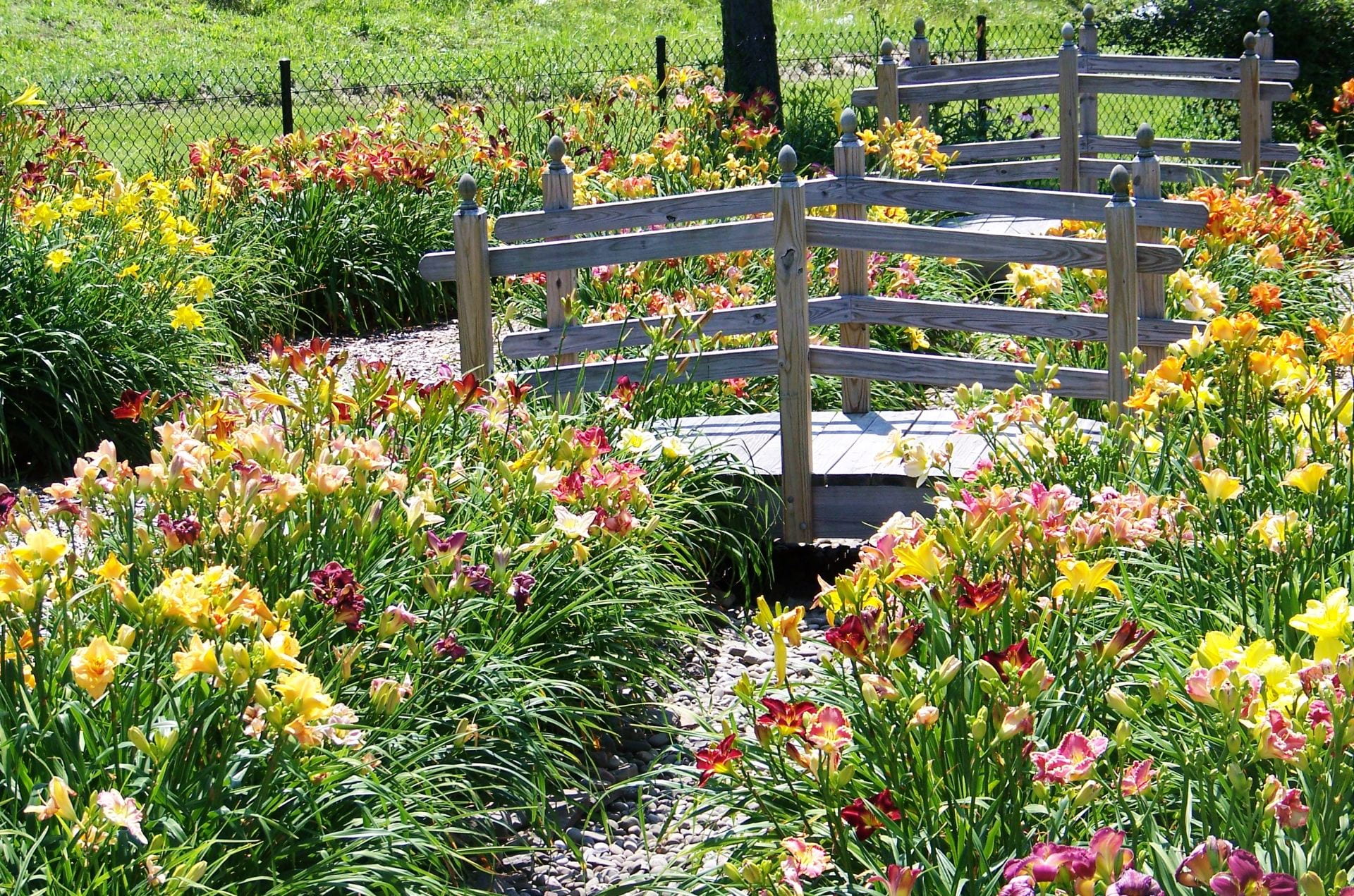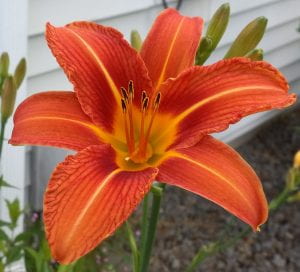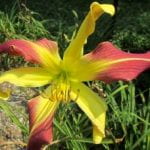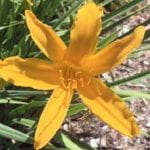
Visitors to the Cutler Botanic Garden in early summer are greeted right at the entrance by the vivid display of the Hemerocallis Garden. Daylilies, Hemerocallis are native to eastern Asia, where it has been cultivated for culinary and medicinal uses for millennia. Explorers traveling along the Silk Road brought them back to Europe. In 1753 Carl Linnaeus classified them with the Latin Hemerocallis, which translates into two words- beauty and day. This is an apt name for a plant whose blooms last only one day. However, with several buds on each scape, or stalk, daylilies maintain consistent blooms during their flowering period.

Almost everyone is familiar with Hemerocallis fulva, the tawny daylily affectionately known as “ditch lily”. Its orange flowers are found smiling beside roadways and filling median strips. Considering what harsh environments these are – with high salt levels, heat, and air pollution- this is an impressive feat. Tawny daylilies are also used on steep slopes to control erosion and block out weeds because they spread easily by rhizomes (underground stems which grow out and set new roots). These and another daylily species Hemerocallis flava (lemon lily) are the basis for the myriad of hybrid daylilies now in cultivation.
Just a glance at the display garden in July reveals the diversity of shape and color to be found from just a few species within the genus, Hemerocallis. The large flowers of Hemerocallis can be cross pollinated with relative ease. Pollen is collected from the anther of one cultivar (plant produced by selective breeding) and transferred to the stigma of another. An early pioneer in daylily breeding was Arlow Burdette Stout, a botanist at the NY Botanical Gardens in the late 19th century. He experimented with thousands of crosses and produced more than one hundred viable hybrids. Popularity of the new varieties grew and amateur gardeners started experimenting with plant breeding.
Today there are thought to be more than 60,000 registered hybrids of Hemerocallis and the organization responsible for keeping track of them in North America is the American Daylily Society. Founded in 1946, the Society is dedicated to education and support for daylily enthusiasts everywhere. They are responsible for registering new varieties, awarding best new varieties (called the Stout Silver Award), and oversee official American Daylily Society Display Gardens, like the one here at Cutler.
More than 300 cultivars are on display at Cutler. They are arranged in sections such as Historical – cultivars introduced before 1990; Doubles – having more than one set of petals; Unusual – forms such as spiders, crispate and spatulate; and Species – unhybridized original species. Daylily blossoms can be found in all colors except true blue and white. They are hardy, well-behaved and easy to grow, blending well with other perennials. Many daylily hybrids also have fun names like ‘Radiation Boihazzard’ and ‘Her Best Bloomers’.

You can learn more about daylilies by visiting the American Daylily Society website: https://daylilies.org/
The Cutler Botanic Garden is free to the public and open dawn to dusk seven days a week. Stop by and see how many daylily colors and forms you can find.
By Master Gardener Volunteer Erin Gordon




